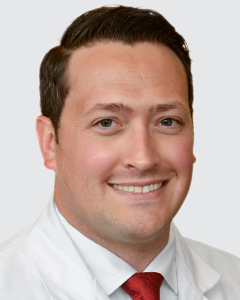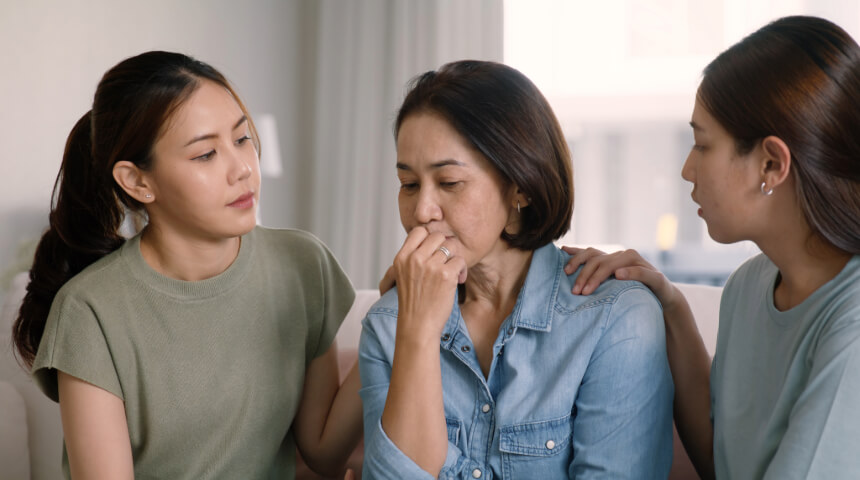Not Too Young for a Stroke? What We Can Learn from TV Star Luke Perry’s Death
Luke Perry, star of the television show “Beverly Hills 90210,” died at age 52 after suffering a stroke. Although he was younger than most stroke victims, strokes can happen at any age and can even be more dangerous for middle-aged adults than those in their 80s.
A stroke occurs when blood to the brain is cut off. That could be due to a blockage or a rupture in the blood vessels in the brain. When blood cannot reach brain cells, bringing necessary oxygen, those cells begin to die. When a person has a stroke, the severity depends on where the damage to the brain cells occurs and how much damage is caused.
A stroke is the fifth leading cause of death in the United States, with nearly 800,000 Americans having a stroke each year. The impact of a stroke can vary — it may cause minor temporary weaknesses, permanent disabilities such as paralysis or death. However, the National Stroke Association says that up to 80 percent of strokes can be prevented.
Types of Strokes
People who experience a stroke have one of two types: hemorrhagic or ischemic.
Hemorrhagic strokes often involve a ruptured aneurysm (a weak spot in the blood vessel) or an abnormal connection between arteries and veins (called arteriovenous malformation or AVM). These tend to be the types of strokes we see in “young, healthy” people. In both instances, the leaking of blood into and around the brain causes pressure and swelling, damaging cells and tissue. Another common type of hemorrhagic stroke is frequently related to uncontrolled high blood pressure. Although a hemorrhagic stroke is less common, it is more lethal.
An ischemic stroke affects about 85 percent of stroke victims and occurs when an artery in the brain is blocked by a clot. This type of stroke can be caused by arteriosclerosis, or a buildup of plaque in the arteries. Heart disease, diabetes, high cholesterol, hypertension and smoking also can contribute to this type of stroke.
Although the type of stroke Perry had is unknown at this time, his relatively young age may have jeopardized his recovery. Middle-aged adults face increased risks from brain swelling after a massive stroke. That’s because as we become older, our brains naturally shrink. At age 52, there is less brain shrinkage and, therefore, less space to accommodate the swelling that happens after every stroke. That alone can make strokes deadlier for younger victims.
Who Is At-Risk for a Stroke?
Stroke in middle-aged adults is not a fluke and becomes more common as people move into the 60s and especially into their 80s.
Although risk factors such as gender, race and family history cannot be controlled, others can be reduced or eliminated. These include:
- High blood pressure
- Smoking
- Diabetes
- Obesity
- Physical inactivity
- High blood cholesterol
- Poor nutrition
- Heart disease
The Role of Tobacco and Diet
Tobacco is directly linked to increasing the risk of stroke, as well as contributing factors to stroke such as heart disease and high blood pressure. The most important thing anyone who is currently using tobacco can do to minimize their risk of stroke is to stop.
If you have tried to quit smoking, but haven’t been successful using commonly available over-the-counter regimens, talk with your primary care physician to see if you are a candidate for prescriptions that can help you quit.
It also is extremely important to maintain a healthy diet and weight, and to work with your physician to medically manage some of the more common medical causes of stroke — diabetes, high cholesterol and high blood pressure.
Warning Signs of Stroke
Although transient ischemic attack (TIA) is not a stroke, it is a serious warning sign for one. It occurs when blood to the brain is temporarily interrupted, but then corrects on its own. A TIA signals the potential for a more serious stroke.
Stroke symptoms occur suddenly and should be treated immediately. The sooner you receive medical attention for a stroke, the better chance of limiting the damage.
Symptoms include:
- Sudden numbness or weakness, especially on one side of the body, of the face, arm or leg
- Confusion or trouble communicating
- Difficulty seeing
- Difficulty walking or loss of balance or coordination
- Severe headache
The National Stroke Association recommends the acronym FAST as a way to remember the most common stroke symptoms.
F: Face— Ask the person to smile and note if one side of the face droops.
A: Arms— Ask the person to raise both arms and see if one arm drifts lower than the other.
S: Speech— Ask the person to say a simple phrase and see if the speech is slurred or if they have difficulty understanding your request.
T: Time— If any of these symptoms occur, call 911 immediately.










